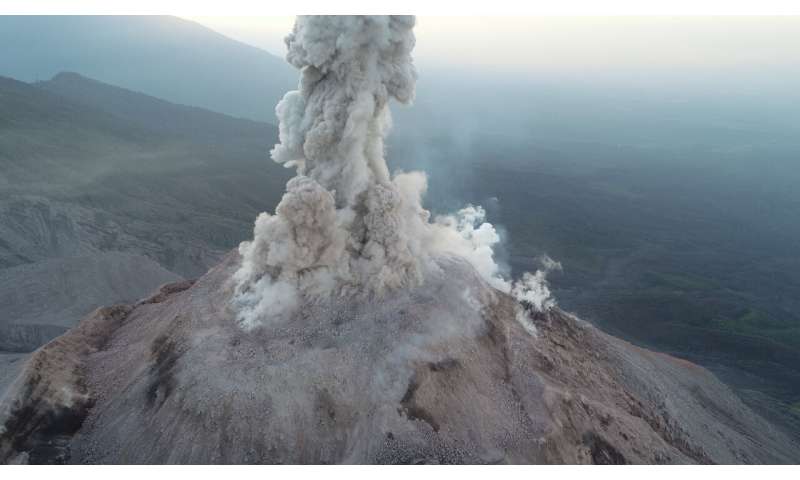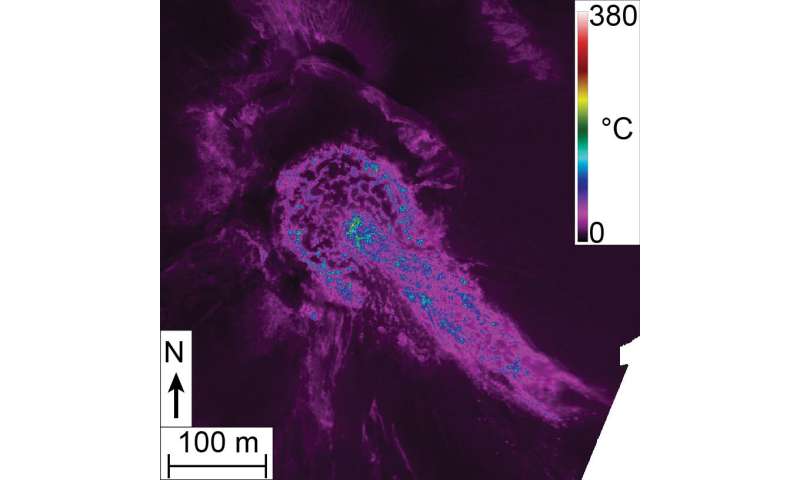How drones can monitor explosive volcanoes
by Science X staff
Due to the difficult accessibility and the high risk of collapse or explosion, the imaging of active volcanoes has so far been a great challenge in volcanology. Researchers around Edgar Zorn from the German Research Centre for Geosciences GFZ in Potsdam are now presenting the results of a series of repeated survey flights with optical and thermal imaging cameras at the Santa Maria volcano in Guatemala. Drones were used to observe the lava dome, a viscous plug of lava. The researchers were able to show that the lava dome shows movements on two different time scales: slow expansion and growth of the dome and fast extrusion of viscous lava. The study was published in the journal Scientific Reports.
"We equipped a drone with different cameras," says Edgar Zorn from GFZ, the first author of the study. "We then flew the drone over the crater at various intervals, measuring the movements of lava flow and a lava dome using a specific type of stereo photography with a precision never seen before."
By comparing the data from the drone, the researchers were able to determine the flow velocity, movement patterns and surface temperature of the volcano. These parameters are important for predicting the danger of explosive volcanoes. The researchers also succeeded in deriving the flow properties of the lava from these data.
"We have shown that the use of drones can help to completely re-measure even the most dangerous and active volcanoes on Earth from a safe distance," says Edgar Zorn.
Thomas Walter, volcanologist at GFZ, who was also involved in the study, says, "A regular and systematic survey of dangerous volcanoes with drones seems to be almost within one's grasp."
The two cameras used to survey the Caliente volcanic cone of the Santa Maria volcano were able to take high-resolution photos and thermal imaging. Using a special computer algorithm, the researchers were able to create complete and detailed 3-D models from these images. They obtained a 3-D topography and temperature model of the volcano with a resolution of only a few centimeters.
Drone missions considerably reduce the risk for volcanologists, as the cameras can be flown directly to the dangerous spots while the scientists remain at a distance. The greatest challenge lies in the post-processing and calculation of the models. "The 3-D models of the various flights must be positioned exactly so that they can be compared. This requires painstaking detail work, but the effort is worth it because even minimal movements become immediately visible," says Edgar Zorn. "In the study, we presented some new possibilities for the representation and measurement of certain ground movements, which could be very useful in future projects."

More information: Edgar U. Zorn et al. UAS-based tracking of the Santiaguito Lava Dome, Guatemala, Scientific Reports (2020). DOI: 10.1038/s41598-020-65386-2
Journal information: Nature , Scientific Reports
Provided by Helmholtz Association of German Research Centres